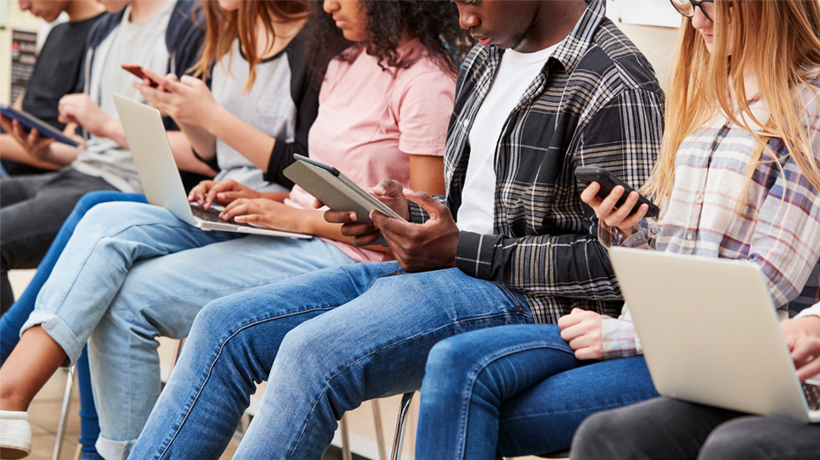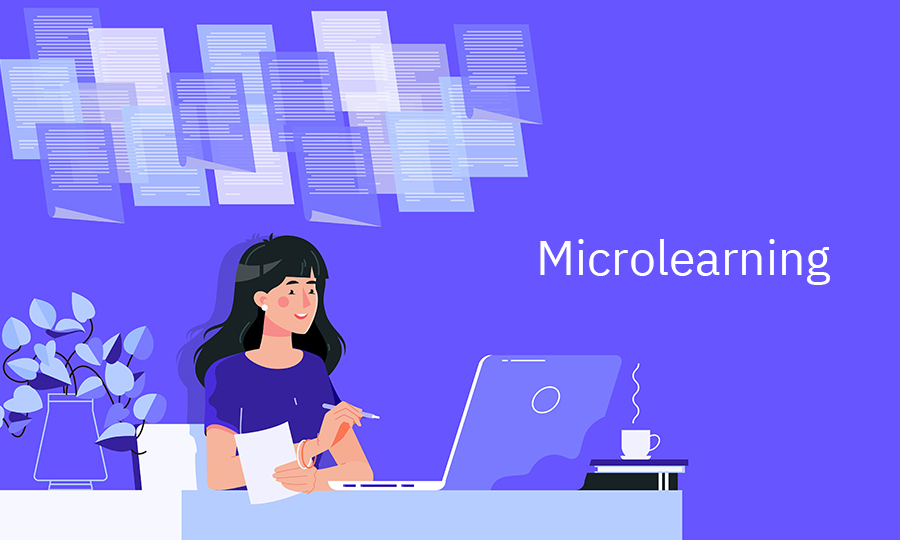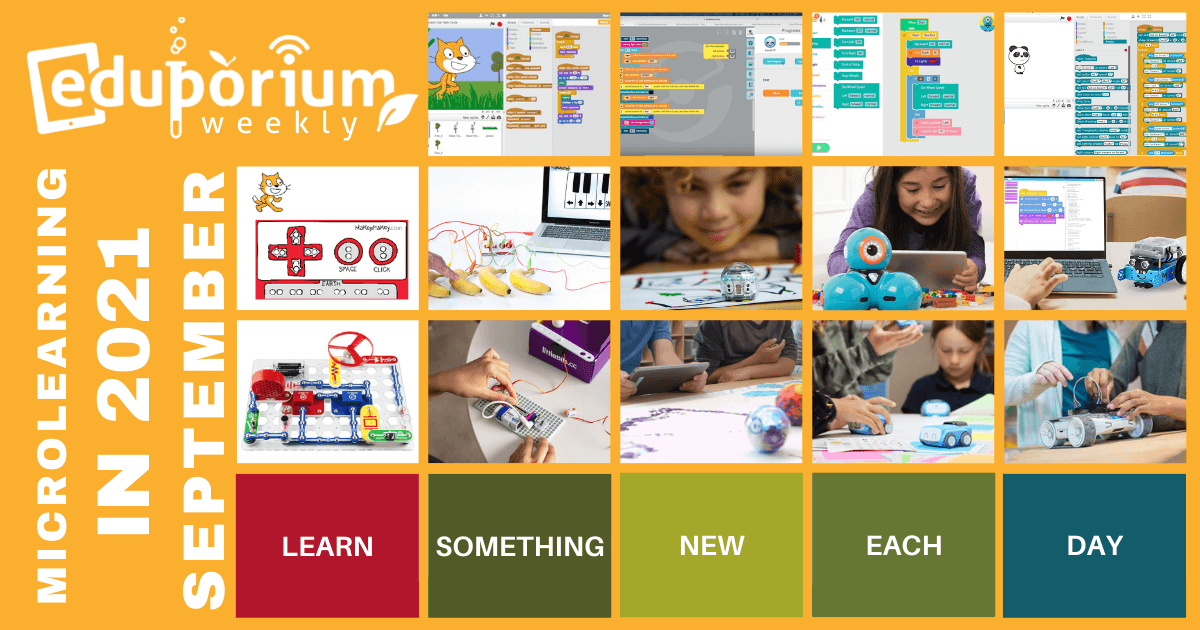As is expected (and as you're likely aware), a return to school buildings also brings with it plenty of changes. Forced to try new approaches over the last year and a half, many educators have found alternative instructional strategies to be effective with certain types of students. They also had to try to fit in the most important topics while dealing with condensed class times and shorter school days. For that reason, microlearning became a viable remote learning strategy. Since it worked so well in certain cases, there are those educators who are strongly considering returning to that type of instruction in the classroom—so long as the situation warrants it.
What is Microlearning?
Microlearning has emerged as a more widely talked about form of instruction. Though previously uncommon in K-12 education, this method has been used in other areas. By definition, microlearning consists of much shorter lessons filled with content that's straight to the point. Teachers work to eliminate any potential 'filler' content and help students focus on the main concepts for a much shorter period of time. With today's generation of students, this is something, in theory, that can be very effective. They want to receive information immediately—not navigate through extra fluff or take the time to determine what's most important. With microlearning strategies, teachers can focus only on what's important and help students stay engaged.
Characteristics of microlearning lessons.
Despite recognizing microlearning's value, definitions of what it actually means and how educators should actually use it definitely vary. Some educators believe that microlearning lessons should last no longer than 10 minutes. Others believe that they could last from 13-20 minutes and still be effective. There's also the other side of the spectrum and some educators believe lessons lasting from 2-5 minutes are ideal. In any case, the goal of microlearning is to enhance student retention and boost performance with maximum efficiency. The short lessons can consist of traditional lectures, digital readings, or videos—whatever works best for students and teachers. When it comes to digital content, however, on-demand access is another key component.
Different microlearning strategies.
While video is a common element of microlearning, it's certainly not the only option. If that's what educators find to work best for their students, however, that's perfectly fine. Other options include e-learning guides, games, podcasts, and other self-paced resources. It's often these visual and multimedia resources that truly help students understand what they need to know quickly. This also allows educators to make their lessons as long or as short as they need to be. If one topic is more complex, for example, students might need a bit more time in learning it. On the other hand, if it's simple, a brief mention could do the trick. As long as teachers feel that they can cover the key learning objectives through microlearning lessons, it could be valuable for students in the classroom.
Benefits of Microlearning for Students
Since, by definition, microlearning entails shorter and more direct lessons, it may seem as though it would appeal to teachers. There's the potential for them to save time in lesson planning, opening up time for other activities, and additional benefits for educators as well. Of course, however, microlearning efforts are typically made with student interests in mind. One of the top ways that microlearning benefits students is by creating increased efficiency. With shorter lessons come less filler and less wasted time. In fact, some research indicates that microlearning helps students improve their immediate focus and long-term retention of material by as much as 80 percent. This is potentially true with both standalone microlearning and using microlearning to reinforce lessons after the fact.
Using microlearning to personalize learning.
One of the reasons microlearning lessons help students is because content is condensed and more easily accessible. If stretched throughout an entire course or unit, the long-term learning is also much more focused and directed. This enables students to only fill their brains with relevant information and not the extra clutter typically found with textbook and lecture-based lessons. Though it's not all that common in K-12 classrooms, those students who have experienced microlearning generally approve of the process and intent behind it. Especially as younger students long for custom content and straight-to-the-point information, the customization is very much appealing. Beyond that, microlearning lessons also tend to be informal and accessible at anytime.
Increased opportunities for engagement.
In microlearning-based classrooms, much of the focus is on the long-term benefits. Right then and there, however, student engagement levels tend to increase as well. Too often, students lose interest when lessons are long and drawn out. Since microlearning essentially offers opportunities that are the exact opposite, it's easy to see why many students would respond well. Presenting content to students in formats they're familiar with also may help. For better or worse, they tend to immediately respond to content that resembles what they consume on social media. Short videos with interactive text and background music is the latest craze. Though it might seem unlikely, it could, however, wind up being a fantastic way to boost both engagement and retention.

Dos and Don'ts of Microlearning
Despite still being quite a new approach, microlearning efforts can be wasted if they're not strategically implemented. While educators might not know the best microlearning strategies off the top of their head, those who have had experience can share some of the key things to include and avoid. And, we can certainly echo a lot of those strategies. To start, let's focus on some of the things that teachers or school leaders should do when launching microlearning efforts. One of the best areas to start with is incorporating agility. Being agile is key in microlearning and this starts in the development phase. This means educators need to pay close attention to how different students respond to microlearning lessons and strategies and use that data to drive the next steps while remaining agile.
Designing microlearning for student preferences.
Next, educators should work with administrators and curriculum creators to design microlearning in the proper format. Since a big part of microlearning is on-demand accessibility, students need access to educational content on mobile devices. Many video teaching resources, of course, are already in that format, but educators need to ensure the content is attention grabbing and helps students stay focused—even for short bursts of time. Also, teachers don't have to take it upon themselves to purchase expensive equipment or shoot their own video. Many video resources have already been created and, ideally, students will have their own or school-issued devices. One other tip we saw is for teachers to include content that's easy to navigate and also interactive. This means placing prompts where students can easily reach them with their thumb and others to keep them clicking forward—just like, oh I don't know, social media.
Things to avoid in microlearning.
As for some don'ts, there's a good amount teachers should try to avoid as well. This starts with trying to jump into microlearning without having properly planned for the short and long term. Besides that, once teachers do get started, they shouldn't focus solely on having the content guide student learning. Educators need to have relevant and engaging questions prepared to provide to students before they begin absorbing the microlearning content. Research shows this better engages students and leads to increased retention as well. Also, teachers shouldn't think of microlearning as a drastically reduced course that needs to wrap up quickly. Rather, they should still incorporate as much relevant information as possible—just in much smaller chunks.
Microlearning and Knowledge Retention
Besides student engagement, we mentioned that microlearning approaches can also improve retention. This is due to a few different factors that enable conditions for that increased ability for students to recall key pieces of information in the long term. Since microlearning consists of 'quick hitter' lessons, as we know, it makes sense that students would be able to remember lesser amounts of information. But, what happens when they start getting fed more and more bits of quick-hitting information? More likely than not, students will remember the most recent examples the best and start to forget those that were presented to them earlier on. With one simple strategy, however, educators can help reduce this issue.
How much content do students really forget?
When it comes to microlearning and retention, the fact of the matter is that one quick lesson might not be enough. Though they're consuming less information, if students are only focusing on each bit for a short time, it could become forgotten. In order to overcome this, educators can use a common-sense approach. We're talking about regular reviews. Even if educators only have a short time (one reason they might turn to microlearning approaches), coming back to key information every two or three days helps students recall it more effectively. Research shows that, after the first time students learn something, they forget up to 50 percent of it. The second time, however, that number drops to 35. The third time, it drops to 25 and the fourth time it drops to 15. By the fifth time, they're often able to recall as much as 95 percent of what they learned.
Microlearning as a review tool.
Another way in which microlearning helps with retention is that it's largely self-directed. This means that, while students are often free to access educational content at any time, in any place, and in various forms of media, they're often leading their own understanding of it. Since the activities are typically pretty short, it's easier for students to partake in these experiences. It also makes it easier for them to review the information between lessons and, ultimately, retain it. Teachers may also choose to use microlearning strategies solely as review tools rather than throughout the entire lesson. In this case, it works largely in the same way and can definitely help students remember (for the long term) what's most important.

How Microlearning Can Help Students Post-Pandemic
Regardless of their instructional situation this year, teachers are likely to want to focus on two main things (perhaps at the request of administrators): teaching all they can and fostering relationships with students. Since it's unlikely they'll fall right back into pre-pandemic routines with regular amounts of instruction, there's a good chance some of them—especially those teaching in the upper grades—might turn to microlearning. We've already talked about some of the benefits of microlearning but, of course, there are others that are more relevant to students than teachers. For starters, a divide-and-conquer approach from educators could help students if they're working with peers who have similar skills. And, the list goes on from there.
Why microlearning works for many students.
When it comes to students, the first key benefit of microlearning is that it's learner-centric. In these lessons, teachers focus only on one concept, so students can better process and retain the information. Next, microlearning helps educators teach and hammer home the basics. It's fairly obvious that microlearning is not too in-depth, but it is still effective in helping students learn the top-tier content and review it as many times as necessary. Plus, besides helping students with long-term retention, many of them actually find microlearning to be fun. This could be because teachers are able to use all different types of media to cover the key topics, engaging students with everything from video and game-based elements to virtual reality tools.
Some final ways in which students benefit.
Continuing on, microlearning enables educators to deliver the right content at the right moment. Some students might forget a key concept if teachers don't reinforce it at exactly the right time, which is something the nature of microlearning allows them to do. Further, microlearning offers plenty of diversity. Since each student has different levels of prior knowledge and different learning styles, educators can use corresponding instructional strategies to best cater to each of them. Finally, microlearning is actually known to support traditional instruction rather than replace it. Since we know learning is not a one-size-fits-all endeavor, microlearning lessons can help educators give each student what they need, especially when using these strategies as supplemental pieces to instruction.
If you've implemented microlearning initiatives in your school, let us know how it's gone in the comments. Or, if you're considering bringing this option up to school leaders, share your thoughts on why you think it might be helpful in your situation. For the latest EdTech, STEM, and 21st century education news, follow Eduporium on Twitter and Instagram. Like us on Facebook, too, or sign up for our newsletter for our latest product announcements and offerings. If you have an idea for the next Eduporium Weekly theme, send us a message on any of our social media accounts or comment below.



